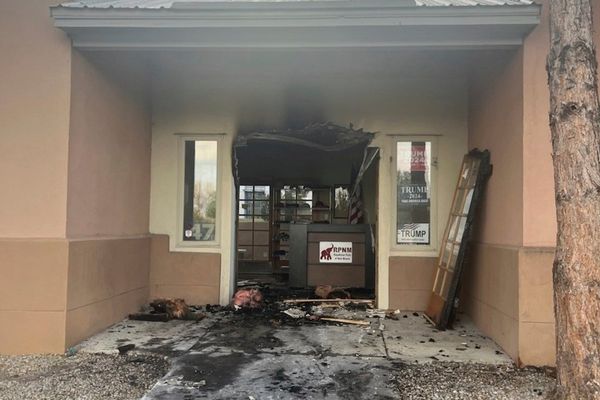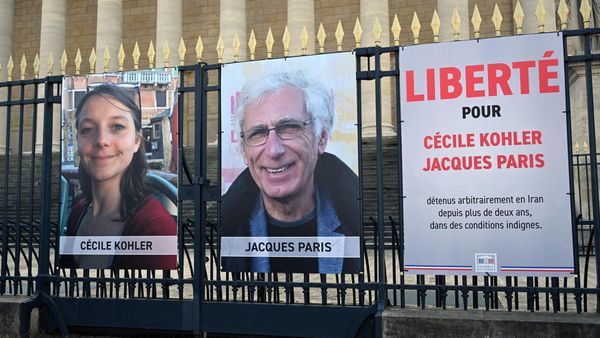
Jennifer and Ian Cameron thought they were having rockwool insulation installed in their Melba home. Instead, it would turn out to be the dangerous Mr Fluffy asbestos.
"We'd been in our house for 41 years and we intended to stay there until we died. But that little plan went awry," Mrs Cameron said.
The couple was among the more than 1000 homeowners whose houses were ordered to be demolished, a difficult process that has left a lasting impact on the capital.
Now, a forest shelter will open at the National Arboretum next year as a place for Canberrans to remember the impact of Mr Fluffy asbestos, which first exposed people to dangerous fibres for decades and then forced hundreds of homes to be demolished.
Mrs Cameron said not everyone affected by Mr Fluffy would like the idea of a memorial site, but she said she felt it was important the story was remembered.
"I don't think it should be just all swept under the carpet and forgotten about because everybody who is involved - everybody who had a Mr Fluffy house - went through very difficult times no matter whether they decided to sell to the government or not. Nobody wanted to leave their house," she said.
The site for the shelter will be selected by the ACT government's Mr Fluffy legacy project working group and is expected to open to the public in June.
Dr Sue Packer, who was the chair of the Mr Fluffy community and expert reference group, said the forest shelter would be one of several projects to acknowledge the impacts of loose-fill asbestos across in the ACT.
"The committee felt a place of reflection is important both to help with the healing for those impacted by Mr Fluffy who wish to use it this way, and as an educational opportunity to raise awareness among the broader Canberra community and interstate and international visitors so we can all be vigilant in the future," Dr Packer said.
Sustainable Building and Construction Minister Rebecca Vassarotti said acknowledging the impact of loose-fill asbestos insulation on Canberra and its people was important.

"A place of reflection was recommended by the former Mr Fluffy community and expert reference group as an important component of the healing process for Canberrans impacted by Mr Fluffy loose-fill asbestos insulation, either directly or indirectly," Ms Vassarotti said in a statement.
"The location of the place of reflection at one of the Arboretum's forest shelters means visitors will be able to sit and reflect on their own or others' experiences with this dangerous material as they look over our city. If visitors would like more information, they will be able to use a QR code to access online information."
Ms Vassarotti said the views of homeowners affected by Mr Fluffy were most important, the government also wanted to hear from those who were otherwise affected by the work to eradicate the substance from the capital.
"We also hope the shelter will raise awareness about the impact dangerous substances can have on communities," she said.

The announcement of the forest shelter coincided with the start of national asbestos awareness week, which prompted industry reminders about the possible presence of asbestos anywhere in Australian buildings more than 32 years old.
A fresh Mr Fluffy house was identified in the heritage precinct in Reid following renovations last year, becoming the sixth property found after a Canberra-wide program to demolish the properties began eight years ago. A seventh house was found in Lyons and added to the register in December 2021.
About 1000 houses in the ACT were insulated with loose-fill asbestos - one of the most dangerous forms of the fibre - in the late 1960s and 1970s by a company trading as Mr Fluffy.
A Commonwealth government-funded loose asbestos insulation removal program was conducted from 1988 to 1993 to remove the substance from houses. This followed a survey of all ACT homes built before 1980 to determine whether this insulation had been used.
However, the ACT government moved to demolish the homes after it was revealed in 2013 owners had been exposed to the dangerous asbestos during renovation work, despite first brushing off calls to demolish the properties.
Then chief minister Katy Gallagher declared in October 2014 she wanted all the houses to be demolished within five years.
There are 22 houses still standing, and the government has previously indicated it would consider compulsory acquisitions from mid-2025.
Amosite asbestos is considered to be one of the two most dangerous forms of the substance, because it is easily crumbled or reduced to powder. The microscopic amosite fibres require very little disturbance to become airborne.
We've made it a whole lot easier for you to have your say. Our new comment platform requires only one log-in to access articles and to join the discussion on The Canberra Times website. Find out how to register so you can enjoy civil, friendly and engaging discussions. See our moderation policy here.







